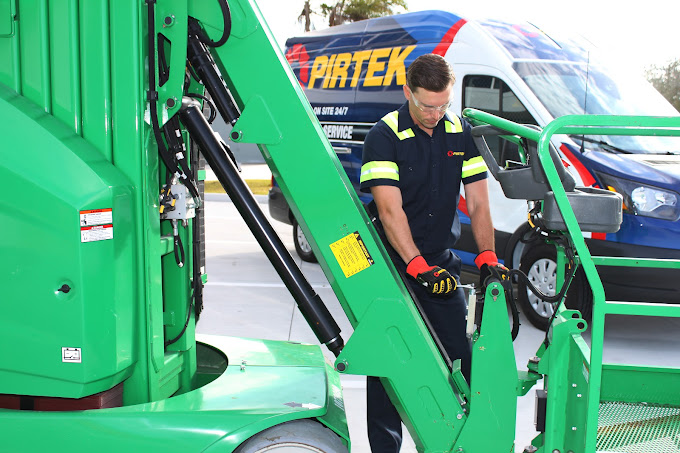Hydraulic hoses are integral components of a wide range of machinery utilized in industries such as construction, manufacturing, agriculture, and transportation. They are responsible for transmitting hydraulic fluid, which powers and controls devices such as excavators, forklifts, and various manufacturing equipment. However, like any mechanical part, hydraulic hoses are subject to wear and tear, leading to potential leaks or failures. Timely and effective hydraulic hose repair is crucial for maintaining operational efficiency, ensuring safety, and minimizing costs associated with downtime. This essay explores the fundamentals of hydraulic hose repair, including diagnosis, repair techniques, replacement considerations, and preventive measures.
#### Understanding Hydraulic Hoses
Hydraulic hoses are designed to withstand high pressure and extreme conditions, making them vital in hydraulic systems. Typically composed of three layers—an inner tube made of synthetic rubber, a reinforcing layer of braided wire or textile, and an outer cover designed to resist abrasion and weathering—these hoses are built to handle a wide range of fluids and temperatures. However, exposure to factors such as high pressure, sharp edges, and environmental contaminants can lead to degradation, resulting in leaks or complete hose failure.
#### Diagnosis of Hydraulic Hose Issues
Before undertaking hydraulic hose repairs, it is essential to accurately diagnose the problem. Common indicators of hydraulic hose failure include:
- Visual Inspection: Inspect the hose for signs of wear, such as cracks, bulges, or cuts. The appearance of fluid leaks around the connection points can also indicate a need for repair.
- Pressure Test: Conducting a pressure test can help identify leaks that may not be visible to the naked eye. This involves pressurizing the system to determine if there are drops in pressure, which can signal a leak.
- Listening for Sounds: Unusual noises, such as hissing or whining, may indicate a breach in the hose, requiring further investigation.
- Fluid Analysis: Analysing the hydraulic fluid for contamination or degradation can also help determine if the hose is functioning properly or if it has been damaged by particles or incorrect fluid types.
#### Repair Techniques for Hydraulic Hoses repairs
Once the problem has been diagnosed, there are generally two primary approaches to address the issue: repair or replacement.
- Temporary Repairs: If the damage is minor, such as small cuts or abrasions, temporary fixes may be possible. Products like hose seals or tape designed for hydraulics can provide immediate, though not long-term, solutions. However, these should not be considered permanent fixes, as they may fail under high pressure.
- Cutting and Splicing: In some cases, a damaged section of the hose can be cut out, and a new connector can be spliced in. This requires precise measurements and the use of specialized tools. It is crucial to ensure that the hose can still handle the required pressure after splicing.
- Complete Replacement: For severe damage or if the hose has reached the end of its service life, replacement is often the most effective solution. Replacement hoses should meet the manufacturer’s specifications for pressure rating, fluid compatibility, and size. This process involves detaching the hose from fittings, installing a new hose, and ensuring that all connections are secure.
#### Replacement Considerations
When replacing hydraulic hoses, several critical factors should be considered:
- Choosing the Right Hose: Not all hydraulic hoses are created equal. Selecting a hose that meets the specific requirements based on the pressure, temperature, and type of hydraulic fluid is paramount. Using hoses that are not rated for the specific application can lead to premature failure.
- Proper Installation: Ensuring that the hose is installed correctly is essential for preventing future problems. Hoses should be routed to avoid sharp edges and excessive bending, and all fittings must be securely attached to prevent leaks.
- Adhering to Standards: Compliance with industry standards and regulations is crucial when selecting and installing replacement hoses. Adhering to standards such as ISO 18752 ensures reliability and safety in hydraulic operations.
#### Preventive Measures to Reduce Hose Damage
While repairs are an essential aspect of maintaining hydraulic systems, preventive measures can significantly reduce the frequency of failures and extend the lifespan of hoses. Key preventive practices include:
- Regular Inspections: Conducting routine visual inspections of hoses and components can help identify early signs of wear. This proactive approach enables timely repairs before failures occur.
- Monitoring System Pressure: Keeping an eye on the pressure levels within the hydraulic system can alert operators to potential problems. Unusually high or fluctuating pressure can indicate underlying issues that need addressing.
- Proper Storage and Handling: When not in use, hoses should be stored in a manner that avoids kinks, bends, and exposure to harsh environments. Proper handling during installation and maintenance is also essential to minimize damage.
- Training and Awareness: Educating staff on the importance of maintaining hydraulic systems and understanding the signs of hose failure is crucial. Employees should be trained on best practices for handling and maintaining hydraulic hoses.
#### Conclusion
Hydraulic hose repair is a critical component of maintaining the efficiency, safety, and longevity of hydraulic systems. Understanding how to diagnose issues, implement effective repair techniques, and perform timely replacements plays a vital role in minimizing downtime and costs associated with equipment failure. Additionally, adopting preventive measures ensures that hydraulic hoses continue to perform optimally. As industries increasingly rely on hydraulic machinery, recognizing the significance of hydraulic hose maintenance and repair will contribute to operational excellence and safety across various sectors.
